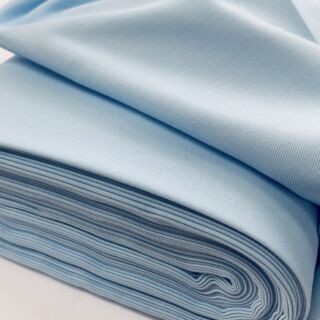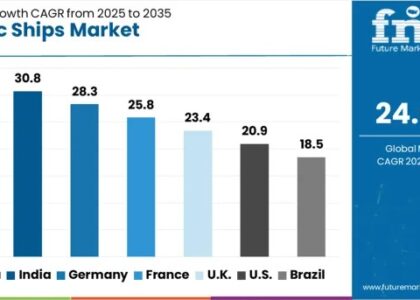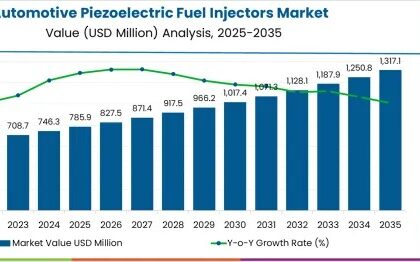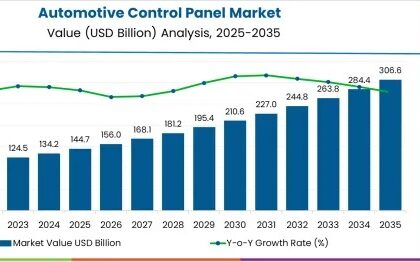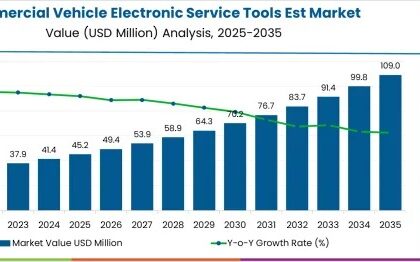The poly cotton fabric market sales are witnessing notable growth, driven by its unique blend of polyester and cotton that offers a versatile and cost-effective textile solution. As the global demand for this hybrid fabric continues to rise, market projections indicate a promising future.
Understanding the Poly Cotton Fabric
Poly cotton fabric, a blend of polyester and cotton, combines the strengths of both materials. Polyester lends durability, wrinkle resistance, and low maintenance, while cotton offers breathability, comfort, and natural softness. This synergy makes poly cotton a popular choice in various applications, including apparel, home textiles, and industrial uses.
The fabric’s adaptability to different printing and dyeing techniques further enhances its appeal across diverse consumer preferences. From casual wear to formal attire, poly cotton fabric’s versatility makes it a staple in the textile industry.
Poly Cotton Fabric Value and Growth Projections
In 2023, the poly cotton fabric market is valued at approximately USD 442 million. The market is expected to expand significantly over the next decade, with a projected value of USD 594.01 million by 2033. This growth reflects a compound annual growth rate (CAGR) of 3% from 2024 to 2034.
The increasing market value is indicative of the fabric’s rising adoption across various sectors. The fabric’s balance of performance and affordability appeals to both manufacturers and consumers, driving sustained demand.
Prominent Drivers of the Poly Cotton Fabric
- Rising Demand for Versatile Textiles: The versatility of poly cotton fabric caters to a wide range of applications, from everyday clothing to specialized industrial uses. This adaptability is a significant factor driving its demand, as it offers a practical solution for diverse consumer needs.
- Growing Apparel and Home Textile Markets: The global apparel industry is experiencing robust growth, driven by rising disposable incomes and changing fashion trends. Poly cotton fabric’s cost-effectiveness and comfort make it a preferred choice for both casual and formal wear. Similarly, the home textile sector’s expansion, including bedding and upholstery, is bolstering the demand for poly cotton products.
- Advancements in Fabric Technology: Innovations in textile manufacturing and processing have enhanced the performance characteristics of poly cotton fabrics. Improved durability, enhanced color retention, and increased ease of care have made poly cotton an attractive option for consumers and manufacturers alike.
- Sustainability Trends: As sustainability becomes a key consideration in consumer choices, poly cotton fabric’s blend of natural and synthetic fibers offers an eco-friendly alternative. The ability to reduce environmental impact while maintaining high-quality standards is driving growth in this segment.
To Gain More Insights about this Research, Visit!
Challenges Faced by the Poly Cotton Fabric
- Competition from Alternative Fabrics: The poly cotton fabric market faces competition from alternative textiles such as pure cotton, synthetic fibers, and eco-friendly materials. While poly cotton offers a balance of benefits, competing fabrics may offer specific advantages that can affect market share.
- Price Volatility of Raw Materials: The cost of raw materials, including polyester and cotton, can be volatile due to market fluctuations and supply chain disruptions. This volatility can impact production costs and pricing strategies, posing challenges for manufacturers in maintaining profitability.
- Consumer Perceptions and Preferences: Despite its advantages, some consumers may prefer natural fibers over blended fabrics due to perceived environmental and comfort benefits. Overcoming these perceptions and educating consumers about the advantages of poly cotton is crucial for market growth.
- Environmental Concerns: While poly cotton fabric offers a more sustainable option compared to some synthetic alternatives, the environmental impact of polyester production remains a concern. Addressing these concerns through improved production processes and recycling initiatives is essential for mitigating negative perceptions.
Poly Cotton Fabric Market: Segmentation
The global Poly Cotton Fabric market can be segmented on the basis of material size, application and distribution channel.
By Material size:
- Less than 5 inch
- 5-10 inch
- 10-20 inch
- 20-30 inch
- More than 30 inch
By Application:
- Clothing and apparels
- Bed Sheets and pillow covers
- Curtains and drapes
- Other
By Distribution channel:
- Online
- Offline
About Future Market Insights (FMI)
Future Market Insights, Inc. (ESOMAR certified, recipient of the Stevie Award, and a member of the Greater New York Chamber of Commerce) offers profound insights into the driving factors that are boosting demand in the market. FMI stands as the leading global provider of market intelligence, advisory services, consulting, and events for the Packaging, Food and Beverage, Consumer Technology, Healthcare, Industrial, and Chemicals markets. With a vast team of ~400 analysts worldwide, FMI provides global, regional, and local expertise on diverse domains and industry trends across more than 110 countries.
Contact Us:
Future Market Insights Inc.
Christiana Corporate, 200 Continental Drive,
Suite 401, Newark, Delaware – 19713, USA
T: +1-845-579-5705
For Sales Enquiries: sales@futuremarketinsights.com
Website: https://www.futuremarketinsights.com
LinkedIn| Twitter| Blogs | YouTube


